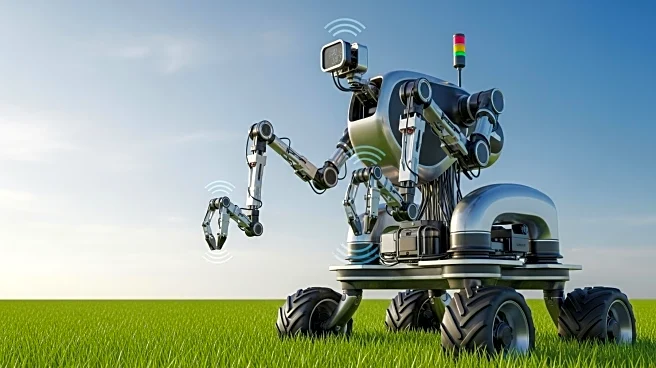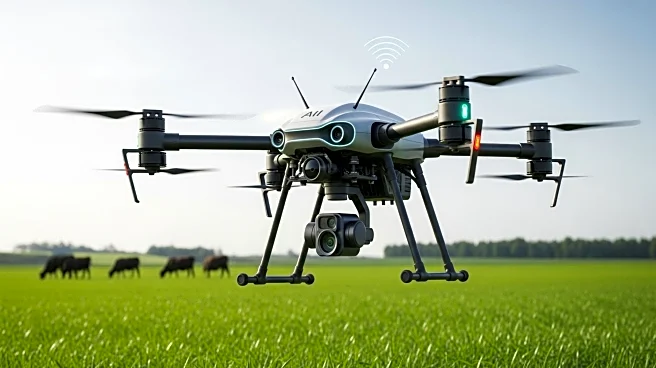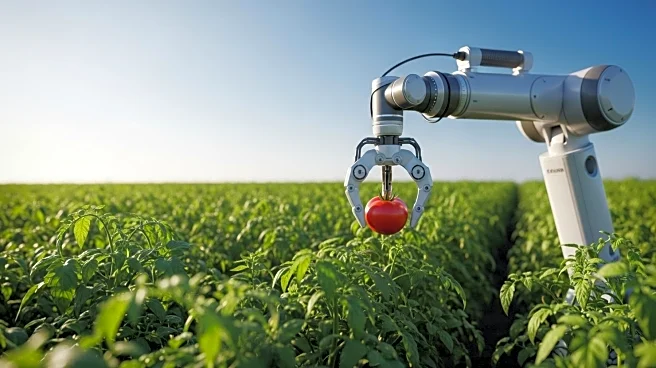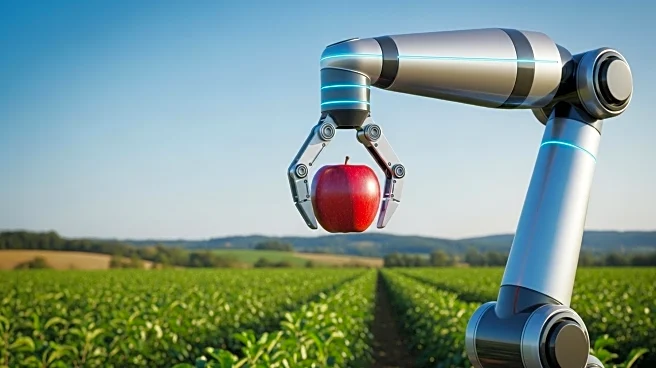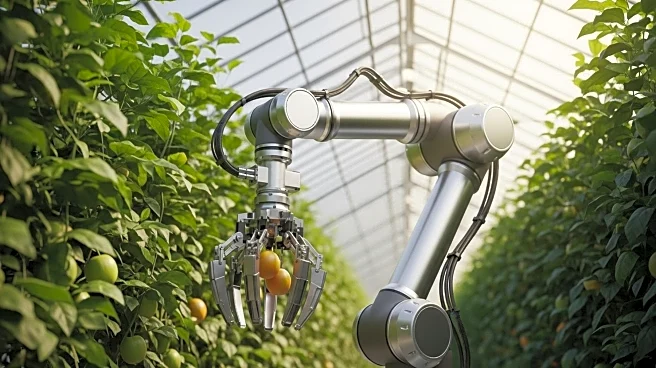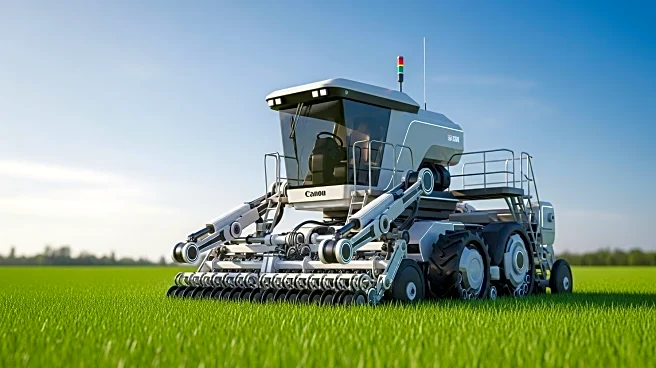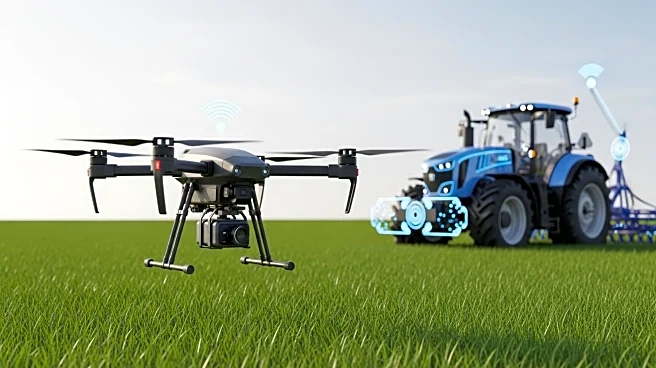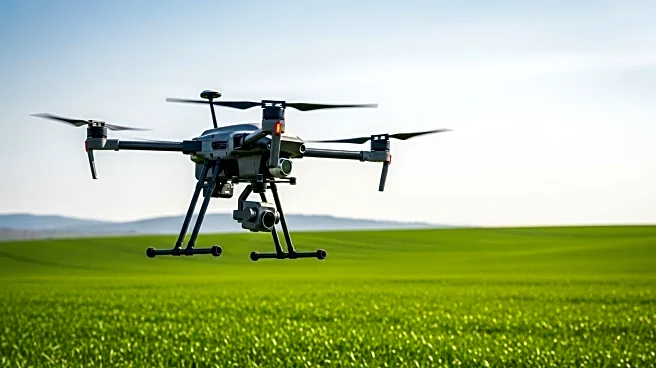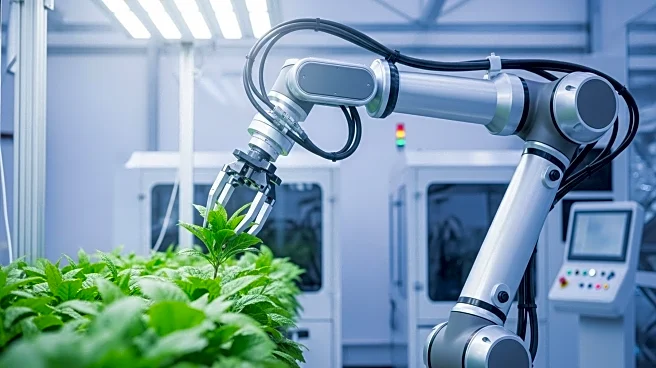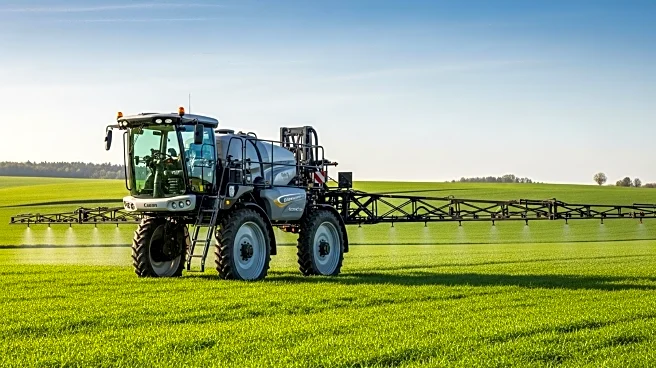What is the story about?
What's Happening?
The agriculture robots market is projected to experience significant growth, with its value expected to rise from USD 14.09 billion in 2023 to USD 76.46 billion by 2032. This growth is driven by the increasing need for automation in farming due to labor shortages, rising production demands, and the push for sustainable agriculture. Agricultural robots, or agribots, are being utilized for tasks such as planting, harvesting, and monitoring, using technologies like AI, GPS, and machine learning. North America currently leads the market due to its advanced farming infrastructure and significant R&D investments, while the Asia-Pacific region is the fastest-growing market, driven by rising food demands and government support.
Why It's Important?
The expansion of the agriculture robots market is crucial for addressing global challenges such as food security, labor shortages, and environmental sustainability. By automating farming processes, these robots can enhance crop yields, reduce waste, and optimize resource usage, which is essential for meeting the demands of a growing population. The adoption of agribots also supports precision farming, which minimizes chemical usage and environmental impact, aligning with global sustainability goals. As the market grows, stakeholders including farmers, technology providers, and governments stand to benefit from increased efficiency and productivity in agriculture.
What's Next?
The agriculture robots market is expected to continue its growth trajectory, with further advancements in AI and machine learning driving innovation. Governments may increase support through subsidies and policies to encourage digital agriculture adoption. Companies are likely to invest in R&D to enhance capabilities in predictive analytics and autonomous navigation. Additionally, emerging markets in regions like Africa and Latin America present untapped growth opportunities, where affordable modular solutions tailored for small-scale farms could gain a first-mover advantage.
Beyond the Headlines
The rise of agricultural robots also presents ethical and environmental considerations. While automation can improve efficiency, there is a risk of over-dependence on machinery affecting soil health. Furthermore, the integration of AI-based systems raises cybersecurity concerns, as these systems are vulnerable to data breaches and manipulation. As the industry evolves, stakeholders must address these challenges to ensure sustainable and secure growth.
AI Generated Content
Do you find this article useful?
